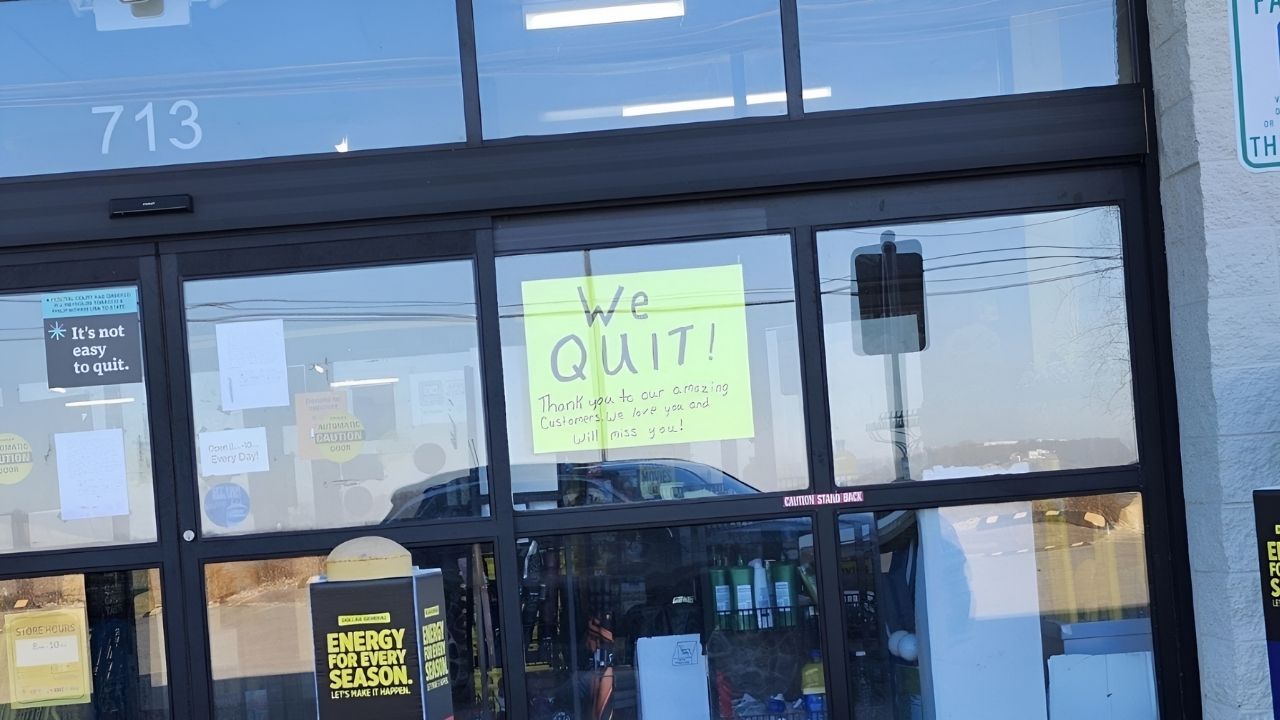
Six workers quit at a Dollar General in Esperance, New York, on November 7, 2024, claiming they had received missing paychecks and had their hours vanished.
The walkout hit as the nation’s largest dollar store chain faced legal pressure and unhappy workers.
Behind “portfolio optimization” lies a deeper problem: How can a retailer built for poor Americans keep them shopping when workers demand basic fairness?
The Safety Cascade

Federal inspectors have visited Dollar General over 240 times since 2017, finding blocked exits, hidden fire extinguishers, and inaccessible electrical panels.
In March 2023, the government designated Dollar General as the first retailer to be added to a “Severe Violator” program for failing to prioritize worker safety.
The company faced $26 million in fines over seven years, exposing workers across Maine to fire and electrical dangers in North Dakota.
The Wisconsin Rebellion

All six workers at a Dollar General in Mineral Point, Wisconsin, quit on March 9, 2024, leaving behind signs that read “We quit” and “Corporate Greed.”
They broke company rules by sending expired food to food banks—saving 7,500+ pounds yearly.
Like Esperance workers, they complained about low pay, seven-day weeks, and poor treatment. The pattern showed labor problems were systemic, not isolated.
The Pressure Mounts

Dollar General’s troubles multiplied. Fire marshals closed a North Carolina store twice in one year for blocked aisles.
In August 2024, the company revised its sales forecasts, warning that customers with an annual income of $40,000 struggled financially.
Profit margins shrank as stores reduced product variety. Regulators, workers, and markets sent the same message: change was necessary.
The $12 Million Settlement

On July 11, 2024, the Labor Department announced that Dollar General would pay $12 million and implement safety improvements across its 20,000 stores.
The deal required hiring safety managers, removing excess inventory, and forming a worker safety committee.
New rule: Fix blocked exits, missing fire extinguishers, or electrical problems within 48 hours or face $100,000-per-day fines up to $500,000. Quarterly inspections continued for two years.
The Esperance Breaking Point

On November 7, 2024, assistant manager America Tillman and five coworkers quit. Tillman said sick time hours disappeared from records without explanation.
She called HR; her manager was fired that night. The next morning, with skeleton staffing, all six left. The store reopened with workers from other locations.
Job postings offered up to $17.10 hourly—revealing a hiring crisis.
Workers’ Words: The Mistreatment Pattern

Tillman and five others signed a statement: “After years of mistreatment and poor conditions, we leave Dollar General.”
She described constant understaffing, forcing employees to work multiple jobs. Wisconsin’s team said: “We love customers but won’t allow corporate greed to stop them getting help.”
Both walkouts revealed the same pattern: cost-cutting had pushed workers past their breaking points until they resigned.
The Regulator’s Escalation

Walkouts occurred as federal inspectors enforced the July settlement. OSHA established quarterly audits, third-party inspections, and potential daily fines of up to $500,000.
State labor departments investigated wage complaints while news outlets reported labor issues.
Federal pressure shifted from one-time penalties to continuous monitoring, creating compliance demands that clashed with the company’s lean-staffing operations.
The Core Customer Crisis

In March 2025, CEO Todd Vasos told investors: “Customers report only having money for basics; some can’t afford necessities.”
Same-store sales rose just 1.4%, customer visits fell 1.1%, but profit dropped 32.3% to $1.1 billion despite $40.6 billion in total sales (up 5%).
Profit collapsed while revenue grew—a warning. Vasos said low-income shoppers showed “no improvement signs” ahead.
The Shutdown Mirage Exposed

The headline’s main claim unravels here. Dollar General announced closures in March 2025, but it wasn’t a crisis—it was a planned retreat.
Closing 96 stores and 45 PopShelf locations: 141 of 20,000, just 0.71%. Vasos called it “less than one percent” and “portfolio optimization” for slow urban stores.
The company plans 575 new openings. No evidence suggests a company-wide shutdown—only headlines exaggerating minor changes.
Franchisee and Operator Frustration

Store managers faced a crisis. The 48-hour fix rule meant that inspection problems cost $100,000 daily, forcing a choice between repairs and fines. Labor shortages worsened matters.
Managers couldn’t hire enough workers at the available pay, especially in rural areas.
With thinner profits from inventory cuts and wage increases, some owners questioned if Dollar General’s lean model could survive. Some considered quitting.
Leadership Recalibration

Dollar General leaders saw the settlement and November walkout as turning points. CEO Todd Vasos, who has run the company since 2015, has built a 20,000-store empire through cost-cutting and rural expansion.
Now, regulatory pressure, walkouts, and customer struggles demanded change.
The company committed to quarterly federal check-ins, hired a Chief Safety Officer, and launched “Back-to-Basics,” emphasizing store improvements and worker investment.
The Inventory Reckoning

The OSHA deal required Dollar General to cut inventory. This struck the company’s core. Dollar General packed maximum products into tiny spaces to boost impulse buying—and block exits.
Complying meant removing slower items, such as apparel, for faster consumables. Wall Street liked it (consumables keep margins), but marketing worried Dollar General narrowed its appeal.
The inventory cut was forced compliance, not choice.
Skepticism and Headwinds

Experts doubted safety plans would work. Cutting inventory meant shoppers couldn’t browse—and browsing drove high-profit impulse buys. Safety committees added complexity to simple stores.
Poor customers faced rising prices, trade uncertainty, and possible benefit cuts in 2025. If shoppers had no extra money, store changes wouldn’t bring them back.
Analysts predicted 18-24 months of profit pressure from compliance while managing modest sales.
The Reckoning Ahead

By November 2025, Dollar General will face tough questions: Can lean discount models survive strict oversight, angry workers, and dissatisfied customers?
The $12 million settlement isn’t ending—it’s a permanent requirement for audits, inspections, and daily penalties.
The November walkout demonstrated that regulations alone cannot resolve worker anger. Poor customers, per Vasos, face no relief. Dollar General is no longer about growth—it’s survival. Will cost-cutting chains adapt or collapse?


